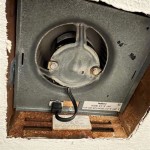How To Clean Ceiling Mold in a Bathroom
Bathroom ceilings, due to their frequent exposure to moisture and humidity, are prone to mold growth. This unsightly and potentially harmful fungus can spread quickly, necessitating prompt and effective cleaning. Addressing this issue not only improves the aesthetic appeal of the bathroom but also protects the health of the occupants.
Identifying the Mold Problem
Before attempting any cleaning, it is crucial to identify the type and extent of the mold growth. Surface mold often appears as black, green, or brown spots or patches. It can also manifest as a gray, powdery substance. If the mold covers an area larger than 10 square feet, professional remediation is recommended. Additionally, if the mold growth is accompanied by a musty odor and/or occupants experience respiratory issues, professional assessment is necessary.
Gathering Necessary Supplies and Ensuring Safety
Effective mold removal requires specific cleaning solutions and protective gear. Essential supplies include a mold-killing cleaning solution (a mixture of bleach and water is a common option, but other specialized mold cleaners are available), a scrubbing brush or sponge, a spray bottle, safety goggles, gloves, and a respirator mask (especially if using bleach). Proper ventilation is also crucial; open a window and run the bathroom exhaust fan to circulate fresh air and prevent the inhalation of cleaning fumes.
Cleaning Surface Mold
For surface mold, a bleach solution (one part bleach to ten parts water) can be effective. Pour the solution into a spray bottle and liberally apply it to the affected area. Allow the solution to sit for 10-15 minutes, allowing it to penetrate and kill the mold spores. After the dwell time, scrub the area with a brush or sponge to remove the visible mold. Rinse the area thoroughly with clean water and dry it completely using a clean cloth or by allowing air circulation.
Addressing Deeper Mold Infiltration
If the mold has penetrated beyond the surface of the paint or ceiling material, more extensive cleaning might be required. This may involve scraping away the affected paint or drywall. For severe cases, replacing the affected portion of the ceiling might be the most effective solution. It's important to wear appropriate protective gear during this process, including a respirator mask, to prevent the inhalation of mold spores.
Preventing Mold Recurrence
Mold thrives in damp environments, so preventing future growth involves controlling moisture levels in the bathroom. Ensure adequate ventilation by using the exhaust fan during and after showers and baths. Repair any leaks in plumbing fixtures promptly. Consider using a dehumidifier, especially in climates with high humidity. Regularly cleaning the bathroom, including the ceiling, with a mold-inhibiting cleaner can also help prevent regrowth.
Considering Natural Cleaning Alternatives
For those sensitive to bleach, natural alternatives like white vinegar or baking soda can be effective against certain types of mold. White vinegar can be sprayed directly onto the moldy area and left to sit for an hour before scrubbing and rinsing. Baking soda can be mixed with water to form a paste, applied to the mold, and then scrubbed and rinsed. However, these solutions may not be as effective as bleach against more resistant mold species.
Choosing Appropriate Cleaning Tools
The choice of cleaning tools can impact the effectiveness of the mold removal process. A stiff-bristled brush is suitable for scrubbing textured surfaces, while a sponge is better for smooth surfaces. Using a disposable cleaning cloth for rinsing and drying helps prevent the spread of mold spores. Avoid using abrasive cleaning pads, as these can damage the ceiling surface and create crevices where mold can easily regrow.
Dealing with Mold on Different Ceiling Materials
Different ceiling materials require slightly different approaches. Painted ceilings can be cleaned with a bleach solution or other mold cleaners, while textured ceilings might require a more thorough scrubbing. For acoustic tiles, cleaning might be less effective, and replacement might be the best option if the mold has penetrated deeply. Always test cleaning solutions in an inconspicuous area first to ensure they don't damage the ceiling material.

How To Permanently Remove Mold From Bathroom Ceiling With Vinegar

How To Get Rid Of Mold In Bathroom Ceiling Step By Guide Aloraircrawlspace

Bathroom Ceiling Mold Removal When To Clean Call Branch Environmental

How To Remove Black Mold From A Bathroom Ceiling

6 Steps To Get Rid Of Mold On The Bathroom Ceiling Redfish Inspections

How To Remove Mould From Ceilings Simply Spotless Cleaning

Mold On Bathroom Ceiling How To Remove From Ceilings

How To Remove Water Stains On Ceilings

Mold On Bathroom Ceiling How To Remove From Ceilings

How To Prevent Mould On The Bathroom Ceiling Dbs Bathrooms
See Also







